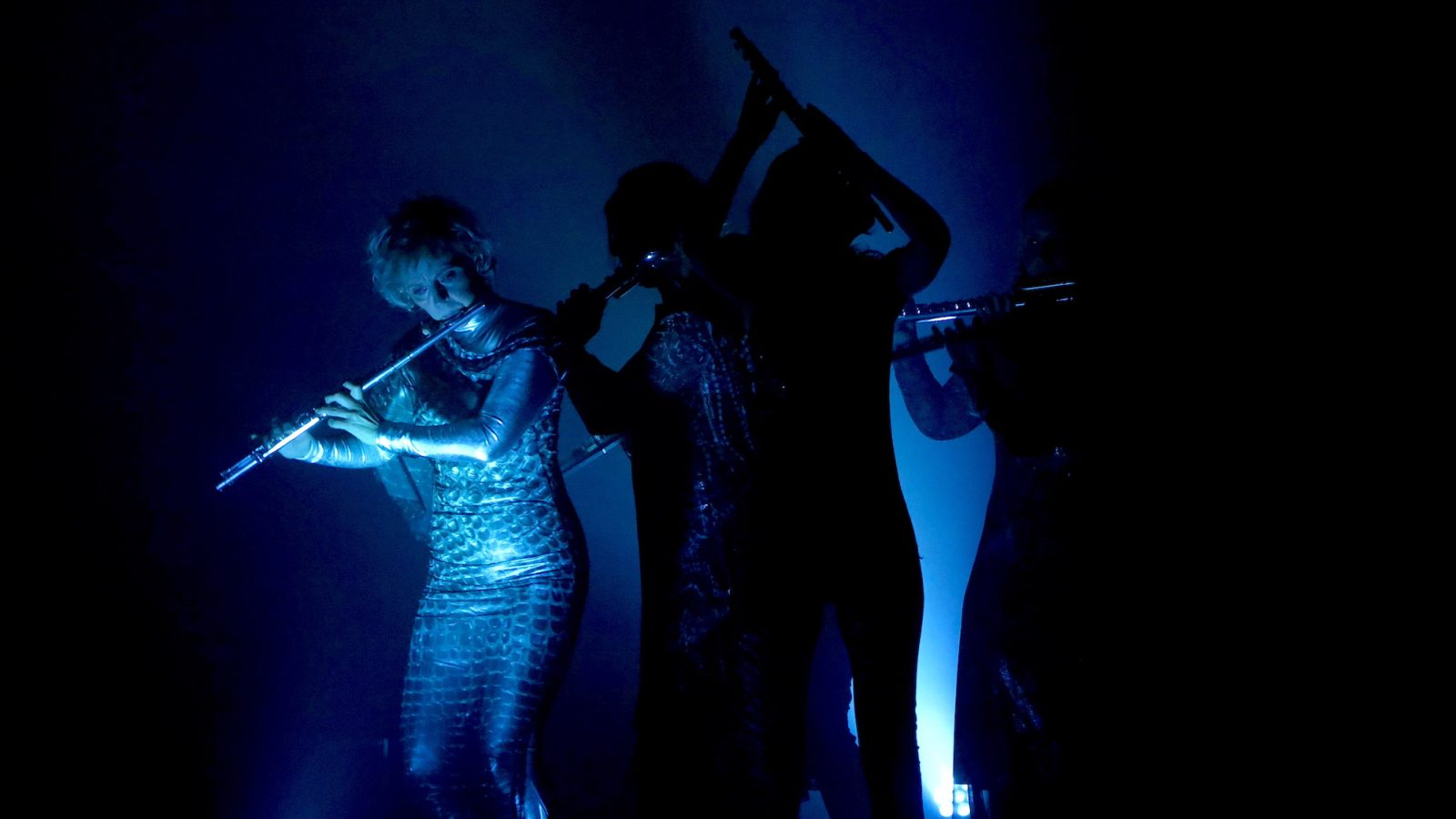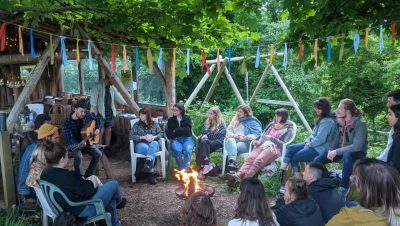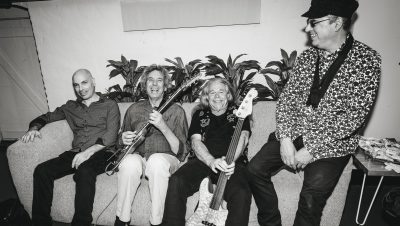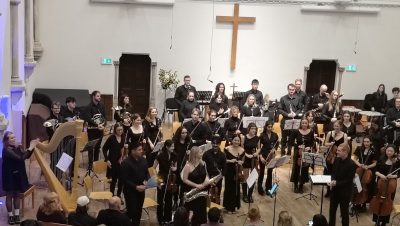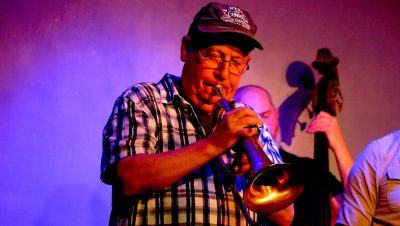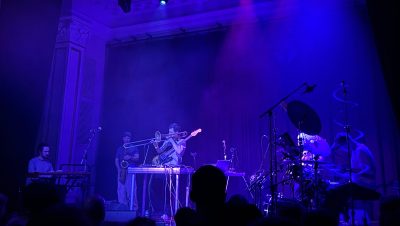Music / contemporary classical
Review: Hidden Notes Festival, Stroud – a sequence of difference and surprises
It began at the ticket office, both literally and symbolically, as I picked up the most stylish festival wristband of the summer and an equally coolly-designed little paperback. That was the Hidden Notes Festival programme, a serious read with in-depth content about the festival performers.
Then it was over the road to the tiny corridor of Klang Tone Records where the morning’s crate diggers quickly became outnumbered by people there for live music. Thus was the annual festival’s distinctive blend of shrewd artistic taste and mischievous unlikeliness established for the weekend.
The performance was by Woolheads, a clever art-pop duo of intoned poetry over live electronic backing, with Uta Baldauf’s gentle German accent helping to take the crammed shop to the Berlin underground. It was engaging and smartly executed stuff but, as the air in the room began to run out, I slipped out into a damp Stroud backstreet and headed for the main venue in St Laurence Church.
is needed now More than ever
Getting in early proved a good move as the impressively full attendance meant seats were in short supply and, having snagged one, I realised I had to forgo the book talks, films and other aspects of the programme to avoid losing it. It was no hardship, however, as each day produced a sequence of five well-chosen and utterly distinctive musical experiences.
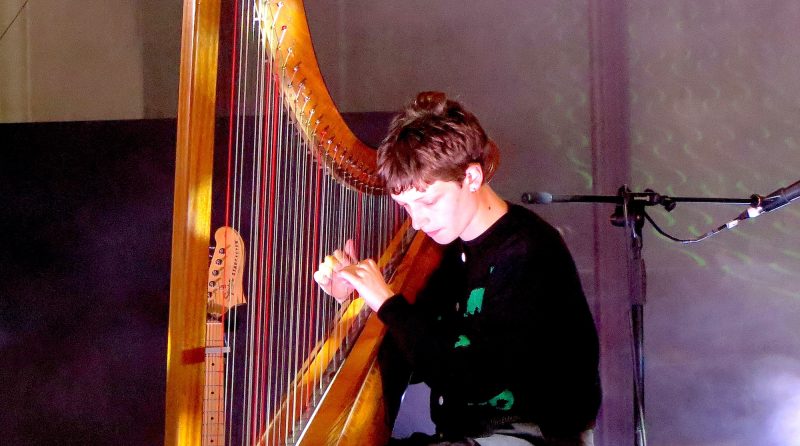
Cerys Hafana at Hidden Notes Festival (Pic: Tony Benjamin)
Saturday’s all-female line-up began with acappella collective HOWL whose music ranged from untraditional folk songs to a beautiful piece by Hildegard von Bingen. Each of the seven singers had clearly distinctive voices, giving a richness to their collective sound.
They were followed by awesomely talented young harpist (from Wales, natch) Cerys Hafana who interspersed compelling instrumentals with grimly Gothic traditional songs delivered in a pure voice with just the slightest folky husk. Their performance had the audience’s pin-drop attention and deservedly received enormous applause.
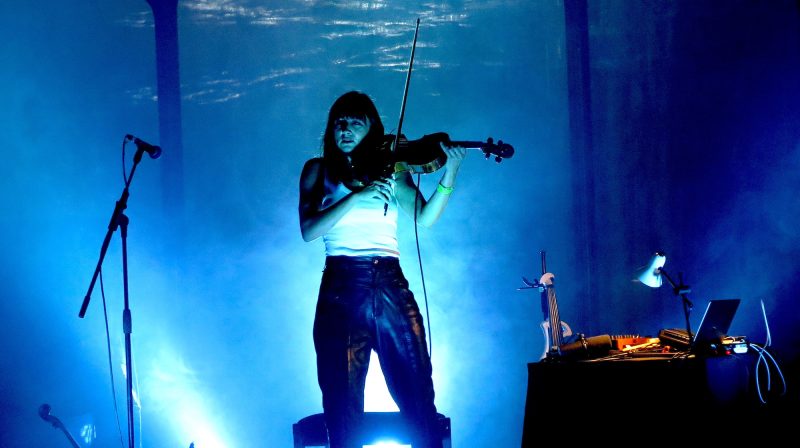
Anna Phoebe at Hidden Notes Festival (Pic: Tony Benjamin)
The church was darkening when Anna Phoebe followed that acoustic simplicity with a combination of electronic backing tracks, spoken word samples and violin. It was a powerful contrast and, as she struck rock’n’roll poses, spotlit in her leather trousers, it felt a bit overcooked for the context. The music was powerful in its own right, however, and is surely destined for bigger stages.

Arushi Jain at Hidden Notes Festival (Pic: Tony Benjamin)
The evening’s headliner – Arushi Jain, from New York – somehow managed a better transition, starting with beautifully sung vocals in her interpretation of the Indian raga traditions she learned since childhood. She gradually moved into the live electronics of modular synth and samples, working up to a kind of Indo-techno sound to close things for the night.
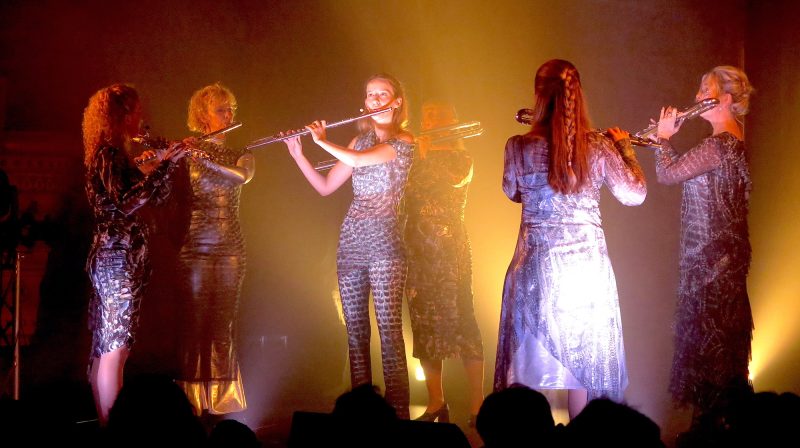
viibra at Hidden Notes Festival (Pic: Tony Benjamin)
Sandwiched between Anna Phoebe and Arushi Jain, however, was the truly strange Icelandic act viibra, six flute players clad in a variety of shiny fish-like costumes. They emerged through the darkness into a foggy backlit gloom to play original music that layered disharmonies and drones in a minimalist tumult with occasional flashes of melodic form. Their choreographed performance saw them writhe and drift, shifting their formations with calculated grace, maybe mermaids, maybe Rhinemaidens.
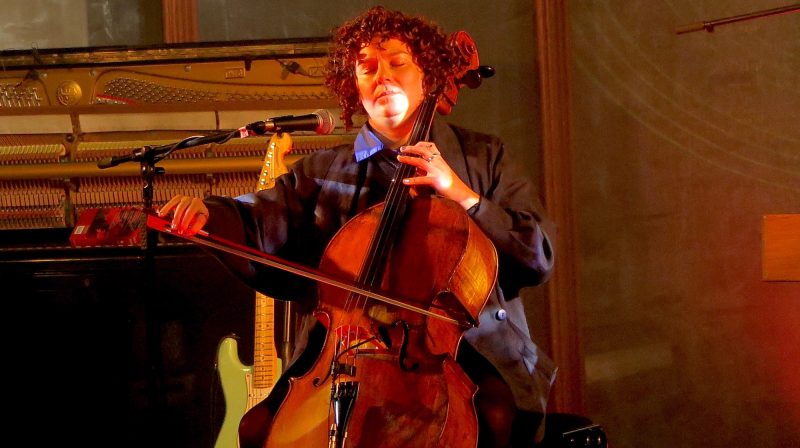
Francesca Ter-Berg at Hidden Notes Festival (Pic: Tony Benjamin)
Sunday began with a local face – cellist Francesca Ter-Berg, one half of Stroud duo Fran and Flora, who opened with a Steve Reich-style tape piece before moving on to a Transylvanian lament on looped cello. Later pieces fully used the sonic possibilities of her instrument in swoops, growls and percussive snaps and her clear, natural voice felt well-matched in St Laurence’s Gothic setting.
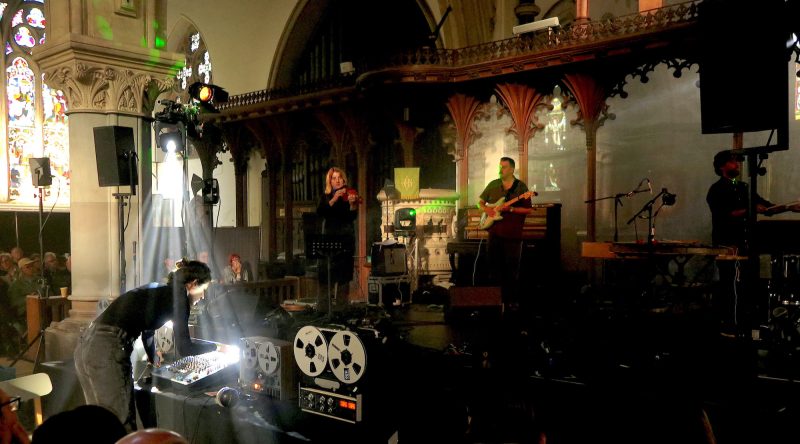
Melos Kalpa at Hidden Notes Festival (Pic: Tony Benjamin)
What came next was altogether different: Melos Kalpa, fronted by a line of four reel-to-reel tape decks with violin, guitar and percussion, including xylophone and glockenspiel. The seamless performance felt both constructed and improvised, tapestries of sound often hung around a metronomic xylophone or a pulsing bass note, with Agathe Max’s violin providing an ostinato narrative. It was captivating music, meditative at times, yet with enough dynamic and textural shifts to not feel repetitive.

Mario Batkovic at Hidden Notes Festival (Pic: Tony Benjamin)
Seated behind his large button accordion Bosnian musician Mario Batkovic looked a solitary figure until he began to play. Then the combination of his ebullient showmanship and emphatic, driving original music expanded to fill the church to crowd-pleasing effect. His trademark sound generally layered dazzlingly fast arpeggios a la Philip Glass with cross-rhythmic left hand work and sudden thunderous bass riffs.

James Holden & Waclaw Zimpel at Hidden Notes Festival (Pic: Tony Benjamin)
If this inevitably felt a bit samey he more than compensated with that theatricality, which was an element completely missing from the headliners James Holden and Waclaw Zimpel – because it was unnecessary. Seated opposite each other across the stage, each surrounded by the obligatory spaghetti of electronic gizmos, they proceeded to construct the perfect bridge between classical minimalism and contemporary electronic dance music. The music flowed and evolved, with Waclaw deploying alto clarinet and Indian lap guitar at times and Holden playing violin but these were just elements of a complex sonic flow orchestrated from a rich vocabulary of electronic possibilities. It felt a little odd that their music was received by a static, seated audience but nevertheless was a triumphant choice to bring things to an end.

Keely Forsyth and Matthew Bourne at Hidden Notes Festival (Pic: Tony Benjamin)
Holden & Zimpel had been preceded, however, by what was probably the most divisive performance of the weekend. The backlit silhouette of Matthew Bourne was hunched against an upright piano as he accompanied the almost invisible singer Keeley Forsyth in fogbound gloom. Her songs were raw, sepulchral pieces delivered in a harshly stylised way that often made it hard to catch all the lyrics. Nevertheless, it was impossible to mistake the simmering feelings of hostility and bleakness in what felt like a classical song cycle of despair. She prowled restlessly, arms and hands twisted about her, striking poses, her long hair shrouding her face. The result was powerfully charged theatre like a musical Beckett piece – Unhappy Days, perhaps?
The joy of Hidden Notes is that you can expect a sequence of difference and surprises and the 2025 edition did just that. In a market place crowded with genre-specific musical festivals a programme of unclassifiable outliers is a real breath of fresh air that was clearly appreciated by those who came. That stylish wristband may have been cut off but the musical inspirations will be resonating for some time to come.
 Our newsletters emailed directly to you
Our newsletters emailed directly to you